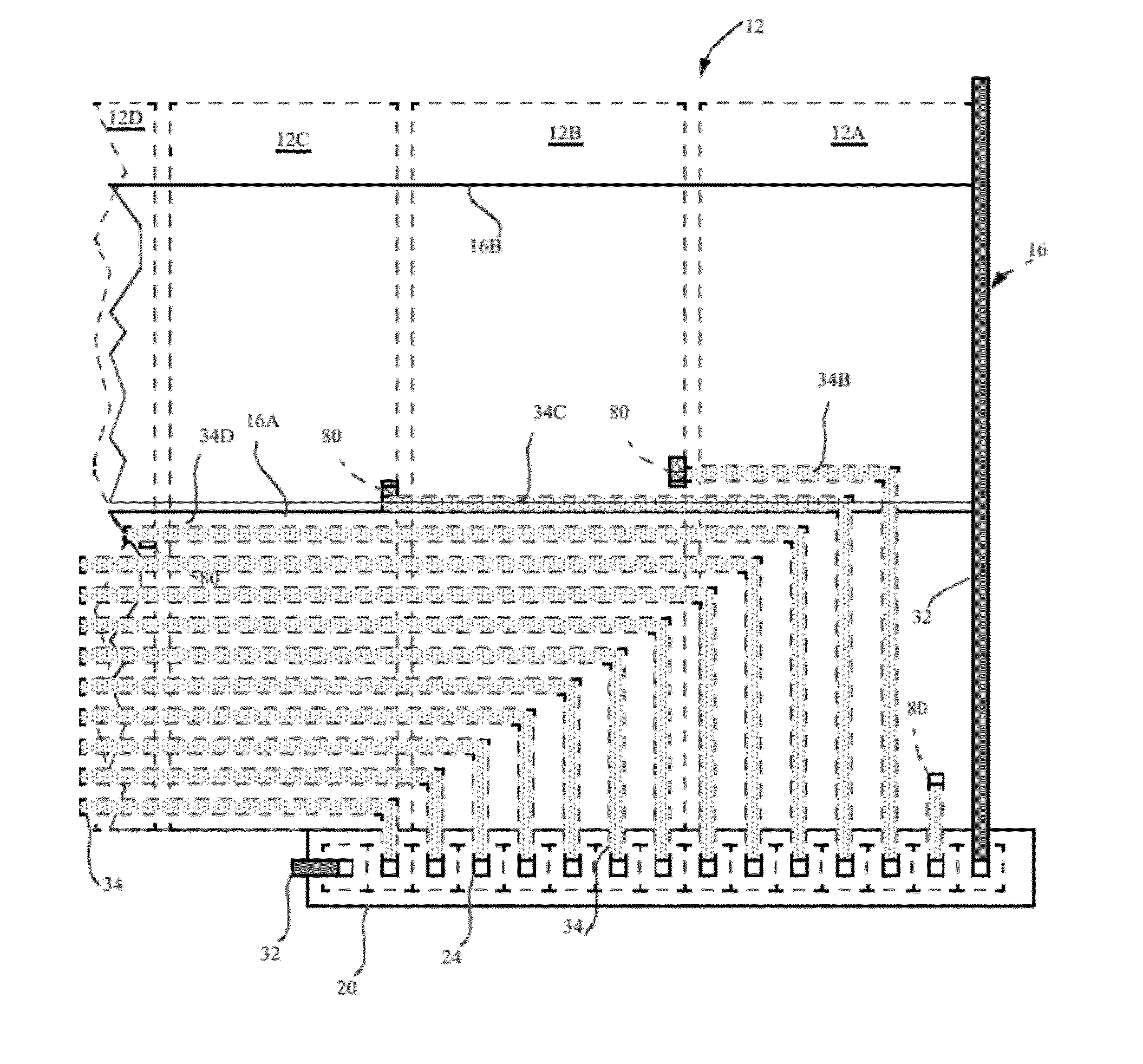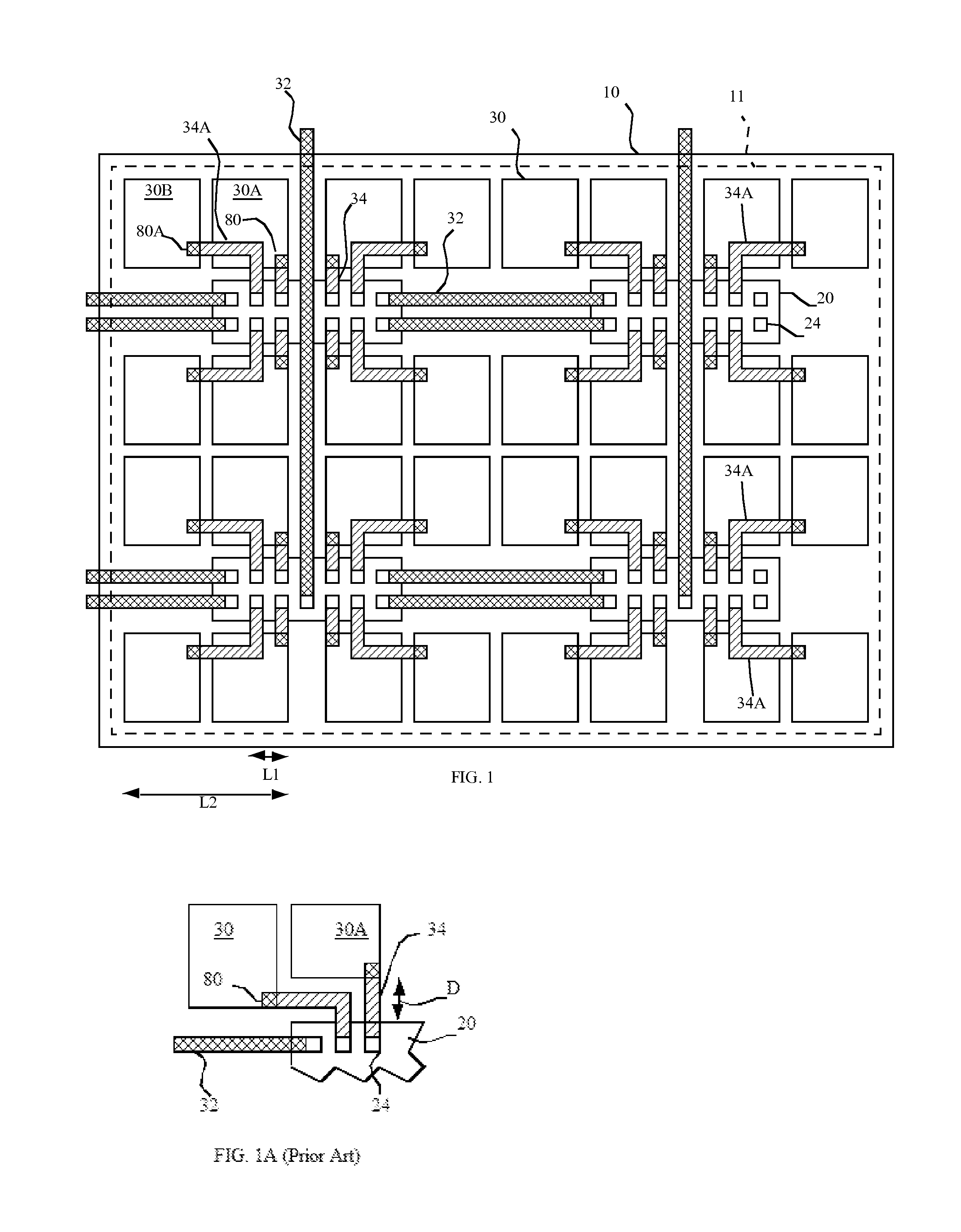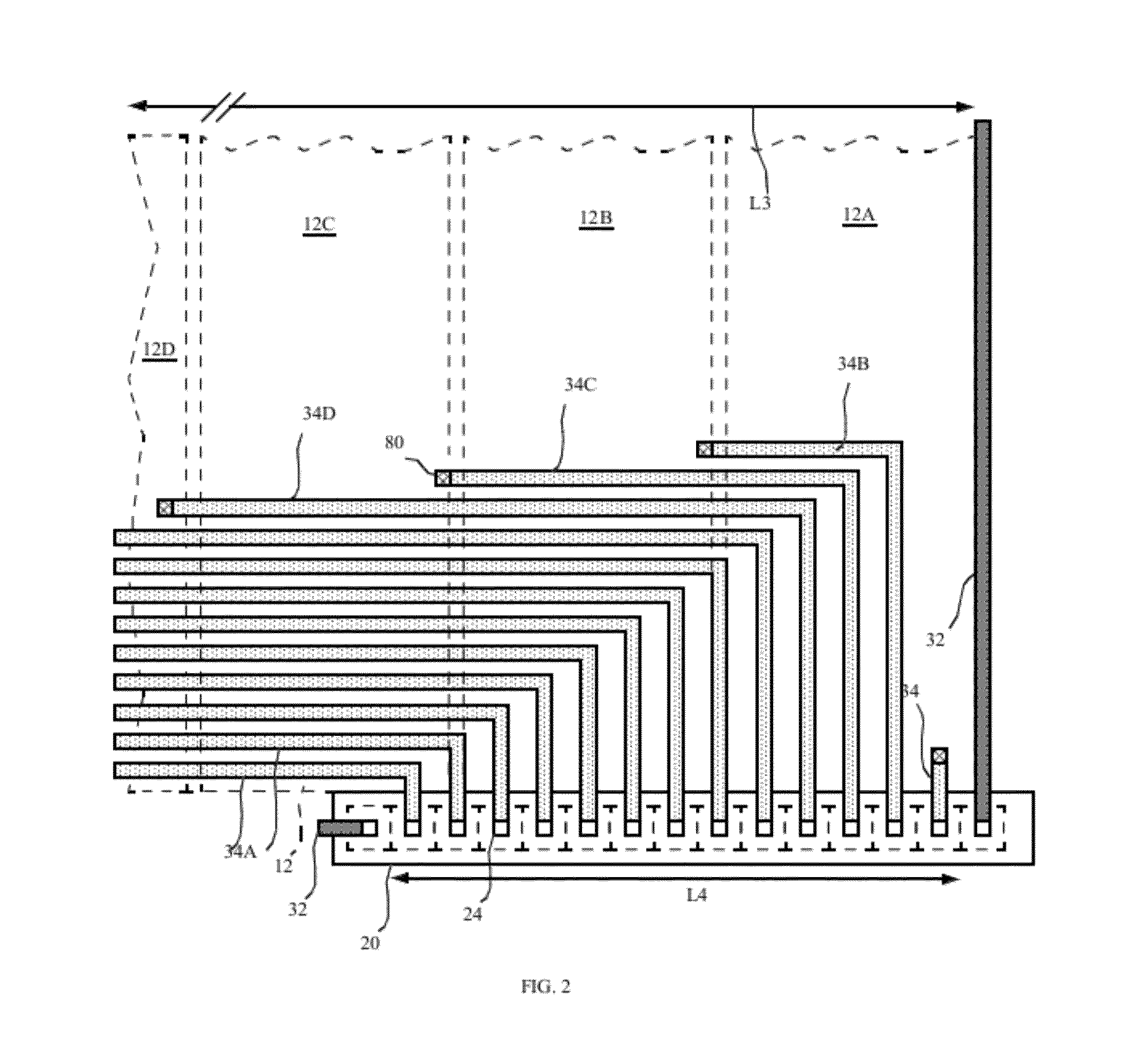Chiplet display with electrode connectors
a chiplet display and electrode connector technology, applied in the field of electrode connector arrangement and connection of signal buss wires, can solve the problems of limited number of rows (or columns) of passive matrix drive devices, flicker can become perceptible, and currents necessary to drive an entire row (or column) of display, so as to improve pixel-driving performance and increase light-emitting area
- Summary
- Abstract
- Description
- Claims
- Application Information
AI Technical Summary
Benefits of technology
Problems solved by technology
Method used
Image
Examples
Embodiment Construction
[0034]The present invention provides higher-performance pixel-driving circuits for driving pixels in an emissive display with increased light-emitting area. The higher-performance pixel-driving circuits are formed in chiplets having crystalline silicon substrates separate from the display substrate. Transistors formed in the crystalline silicon substrates are smaller and have higher performance than conventional thin-film transistors found in prior-art active-matrix displays. Because the transistors are smaller and located within chiplets, electrical connections from the pixel-driving circuitry to pixel electrodes are necessary and are more concentrated in a smaller area than the vias typically used in a TFT active-matrix circuit. Referring to FIGS. 1A and 9, in an example illustrating a chiplet design with a routing solution suggested by the prior art, a conventional routing scheme for the electrical connections to a chiplet would require a significant display substrate area for th...
PUM
 Login to View More
Login to View More Abstract
Description
Claims
Application Information
 Login to View More
Login to View More - R&D
- Intellectual Property
- Life Sciences
- Materials
- Tech Scout
- Unparalleled Data Quality
- Higher Quality Content
- 60% Fewer Hallucinations
Browse by: Latest US Patents, China's latest patents, Technical Efficacy Thesaurus, Application Domain, Technology Topic, Popular Technical Reports.
© 2025 PatSnap. All rights reserved.Legal|Privacy policy|Modern Slavery Act Transparency Statement|Sitemap|About US| Contact US: help@patsnap.com



